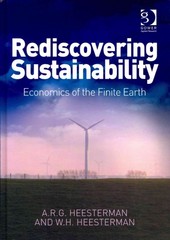Please assist with the following:
1. Solow model in continuous time. Consider the Solow model in continuous time with pro- duction function y = f(k) satisfying the usual properties, constant savings rate s, depreciation rate 6, productivity growth g and employment growth n. (a) Use the implicit function theorem to show how an increase in s affects the steady state val- ues k*, y", c*. Does this change in s increase or decrease long run output and consumption per worker? Explain. Now consider the special case of a Cobb-Douglas production function f (k) = ko. (b) Derive expressions for the elasticities of capital and output with respect to the savings rate d log k* d log y* d log s d log s How do these depend on the curvature of the production function o? Explain. (c) Derive an exact solution for the time path k(t) of capital per effective worker. Now consider the specific numerical values o = 0.3, s = 0.2, 6 = 0.05, g = 0.02, n = 0.03. (d) Calculate and plot the time paths of k(t), y(t), c(t) starting from the initial condition k(0) = k*/2. How long is the half-life of convergence? (e) Now suppose that we are in steady state k(0) = k* when the savings rate suddenly increases to s = 0.22. Calculate and plot the time paths of k(t), y(t), c(t) in response to this change. Explain both the short-run and long-run dynamics of k(t), y(t), c(t). What if instead the savings rate had increased to s = 0.30? Do you think these are large or small effects on output? Explain.2. Natural resource depletion in the Solow model. Consider a Solow model where out-put is given by the CRS production function YE} = Klitiiiit}\"till\"'5, U a: m" *1 1 where Rift} denotes a stock of resources that depletes at rate 3 L:- [l as} = was} The rest of the model is as standard with constant savings rate sj depreciation rate :5, produc- tiyit},r growth 9 and employment growth 11. {a} Let gy] and git-{t} denote the growth rates of output and the capital stock. Derive a. formula for gy {t} in terms of g}: [t] {b} Let g; and 5:} denote the growth rates of output and the capital stock along a balanced growth path. Show that along any balanced growth path 5:}; = g}. Solve for this growth rate. [c] Does the economy necessarily converge to a balanced growth path? Explain. {d} Now suppose instead that resources RE} grew in line with population, RR} = n}. Compare the longrun growth rate of the economy with resource depletion from part {b} to the long growth rate of this alternative economy without resource depletion. 'What would make this gap between the growth rates large? Explain








